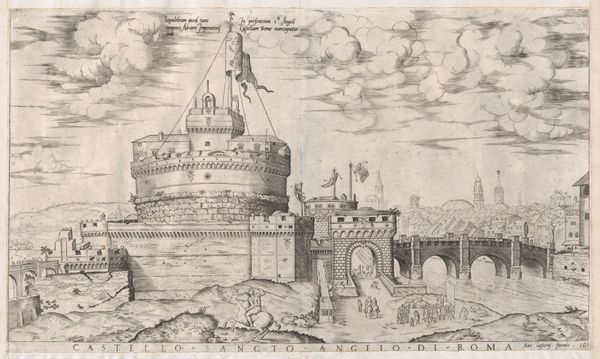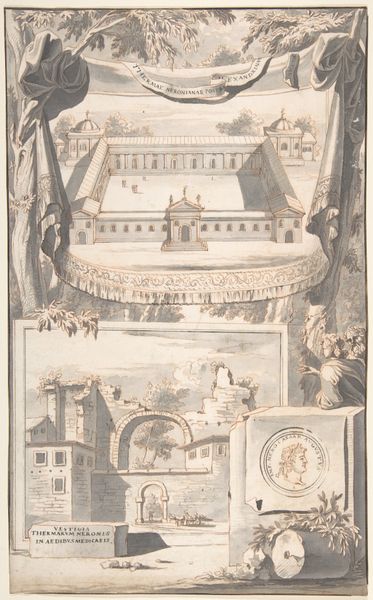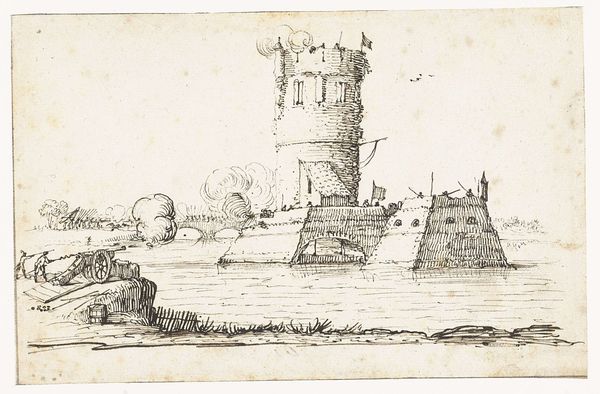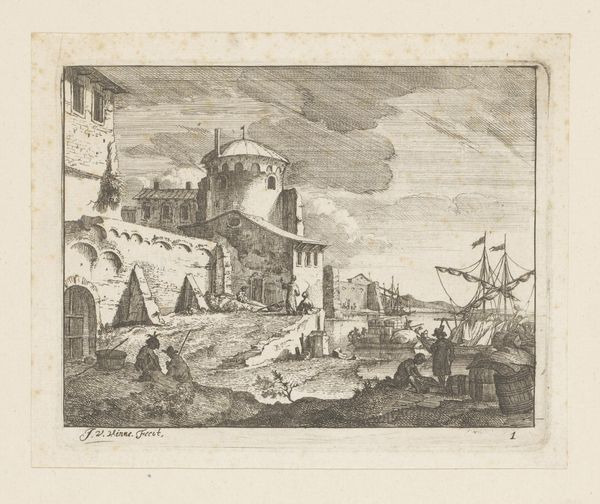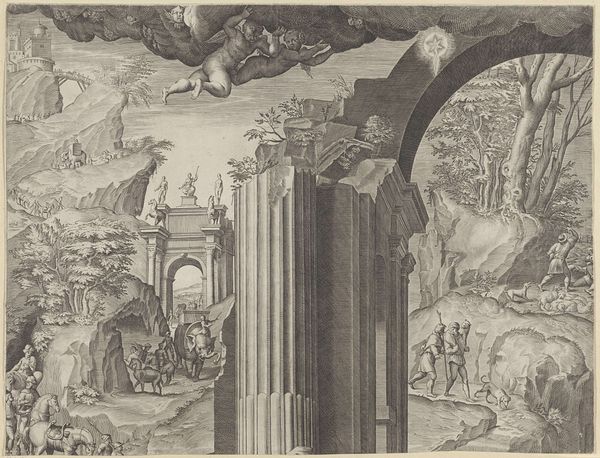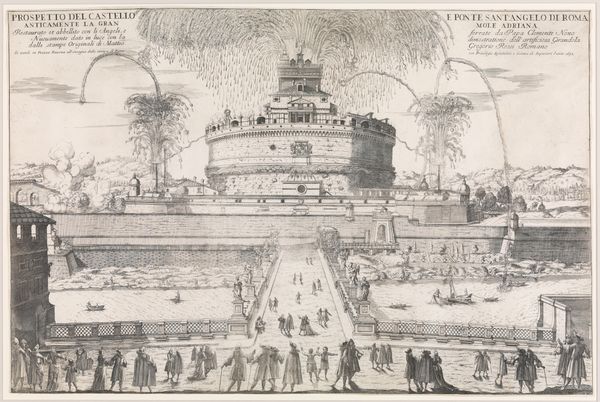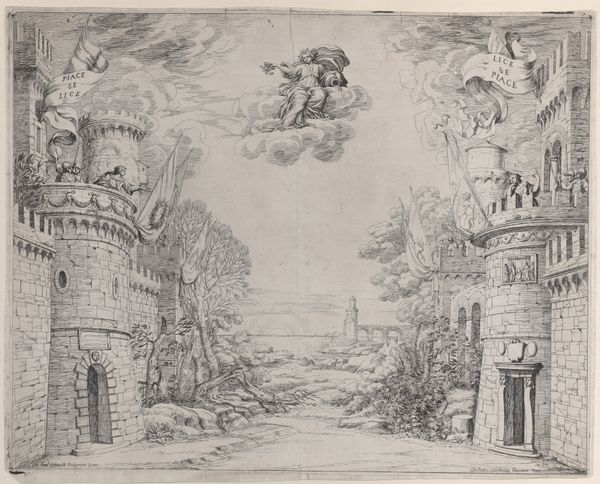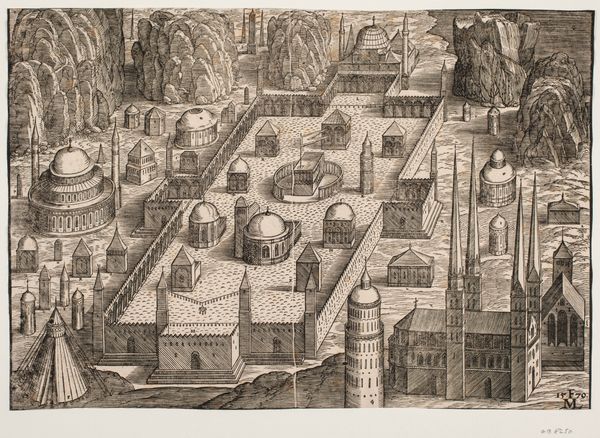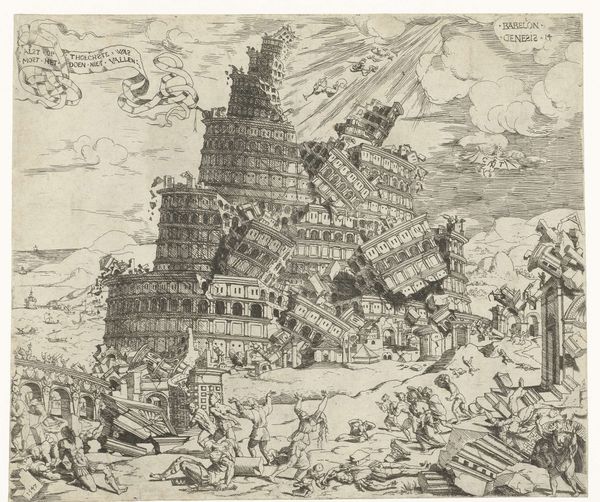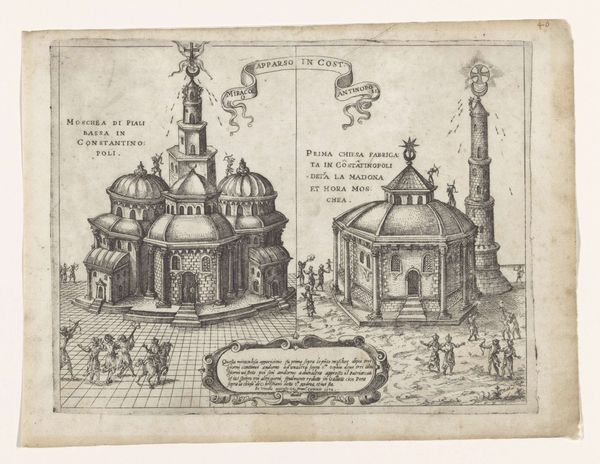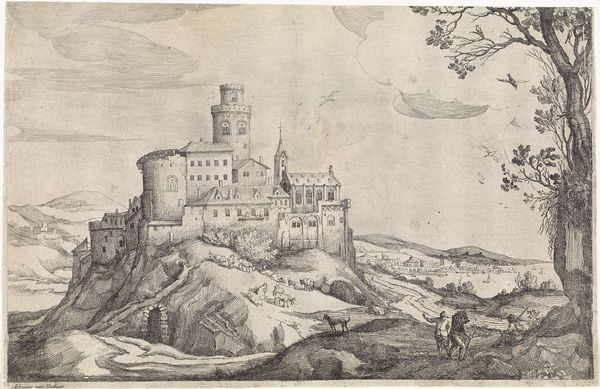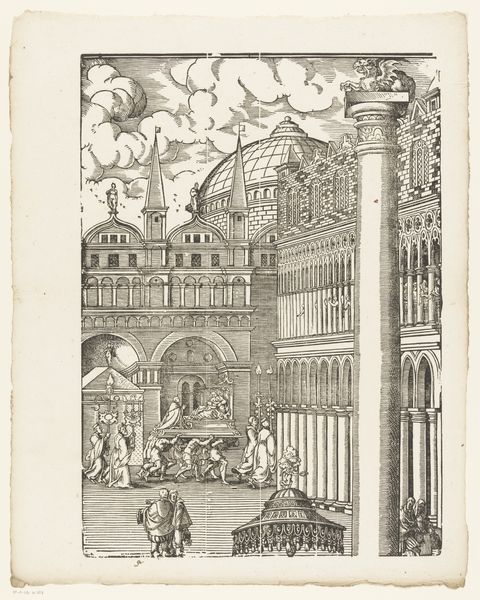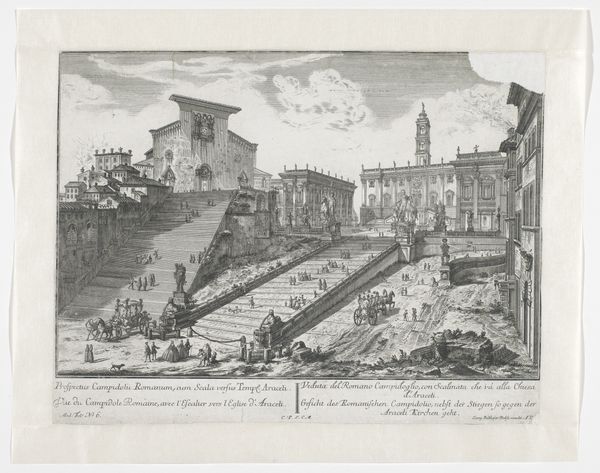
Speculum Romanae Magnificentiae: Castello Sant' Angelo 1530 - 1580
0:00
0:00
drawing, print, engraving, architecture
#
drawing
# print
#
form
#
11_renaissance
#
line
#
cityscape
#
history-painting
#
italian-renaissance
#
engraving
#
architecture
Dimensions: sheet: 12 3/16 x 19 11/16 in. (31 x 50 cm) mount: 19 1/8 x 26 in. (48.6 x 66 cm)
Copyright: Public Domain
Curator: This engraving is titled "Speculum Romanae Magnificentiae: Castello Sant' Angelo," and it was created sometime between 1530 and 1580 by an anonymous artist. Editor: The print has an impressive, almost overwhelming feel, a density in its lines that captures the weight and permanence of this ancient structure, yet at the same time feels detached, as though viewed from afar. Curator: Indeed. The “Speculum Romanae Magnificentiae,” meaning "Mirror of Roman Magnificence," was a publishing project intending to celebrate and document ancient Roman monuments. This print, like others in the series, served not only as documentation but also as a symbol of papal power. Editor: Looking at the architectural details, it strikes me how the artist uses line to differentiate textures – the smooth, dressed stones near the top of the Castello contrasting sharply with the rougher, more rugged base. How do you see that formal choice relating to its political function? Curator: Well, the Castello Sant'Angelo itself has a complex history. Originally built as Emperor Hadrian's mausoleum, it was later integrated into the Vatican's defenses. Its transformation reflects the papacy's ability to adapt and dominate existing structures of power. It also tells of the Church’s appropriation of Roman legacy as their divine right to rule. Editor: You know, focusing on the linear aspect, I find a remarkable contrast. On the one hand, there's this detailed rendering of architectural elements—the walls, battlements, the bridge spanning the river—yet the human figures are almost abstract, like little sketches populating the landscape. Curator: I believe it indicates an emphasis on the enduring nature of institutions versus the ephemeral existence of the people, whose individual identities are of little consequence against such formidable political infrastructure. It evokes broader narratives of gendered roles too, I think. Architectural engraving and other precise skills were gendered male during the Italian Renaissance. Editor: It also could highlight the artist's compositional concerns in his contrast of static architecture with organic, dynamic shapes in the cityscapes to underscore both. Regardless, the dialogue it sets up creates a real charge. Curator: It’s through unpacking these layered elements, and by acknowledging art's engagement in cultural discourse, that we can better grasp this work's historic function as an agent of civic identity formation and power display. Editor: Right. Appreciating that delicate balance between form and function is key to understand and truly admire artworks like this.
Comments
No comments
Be the first to comment and join the conversation on the ultimate creative platform.
